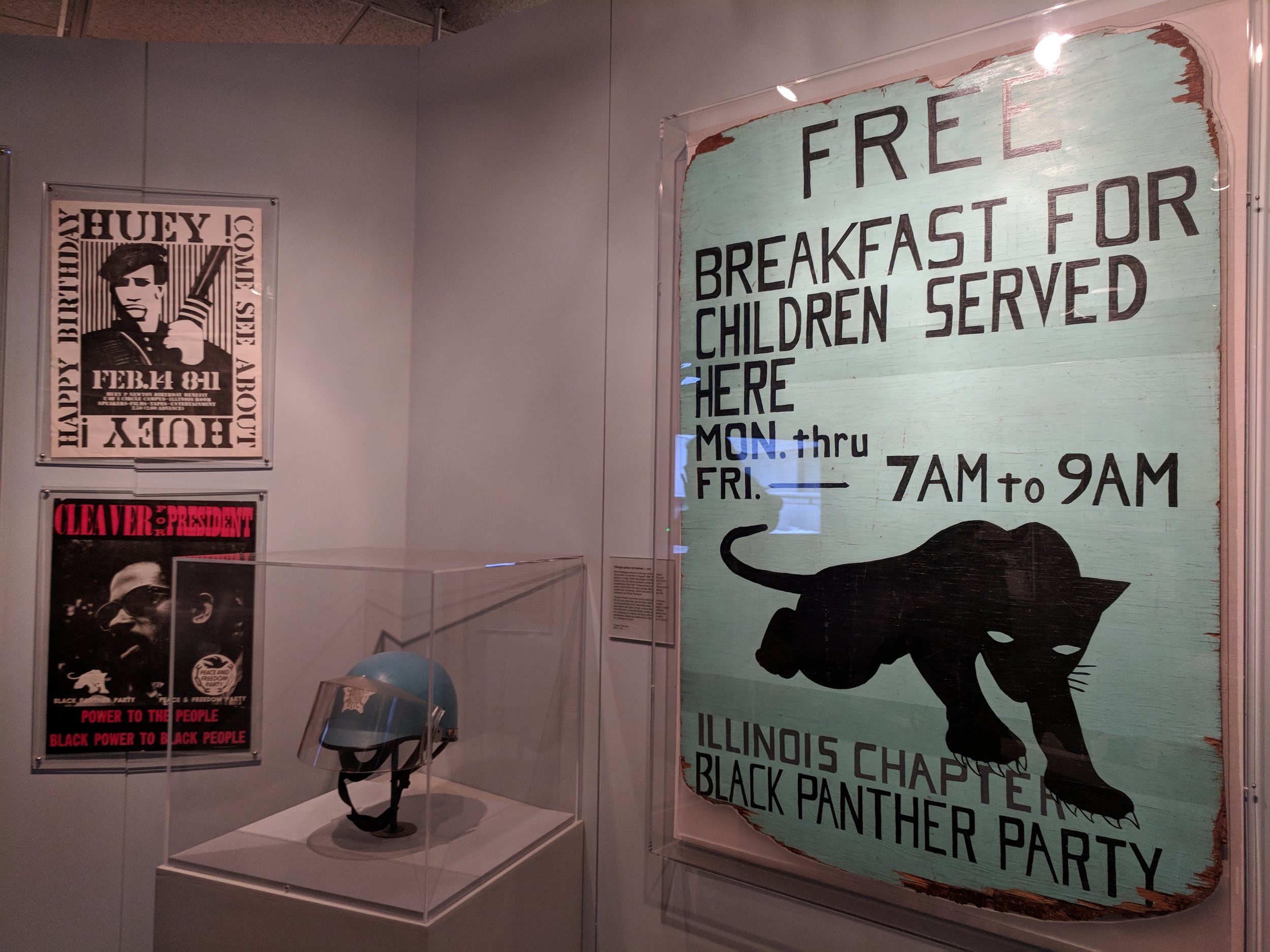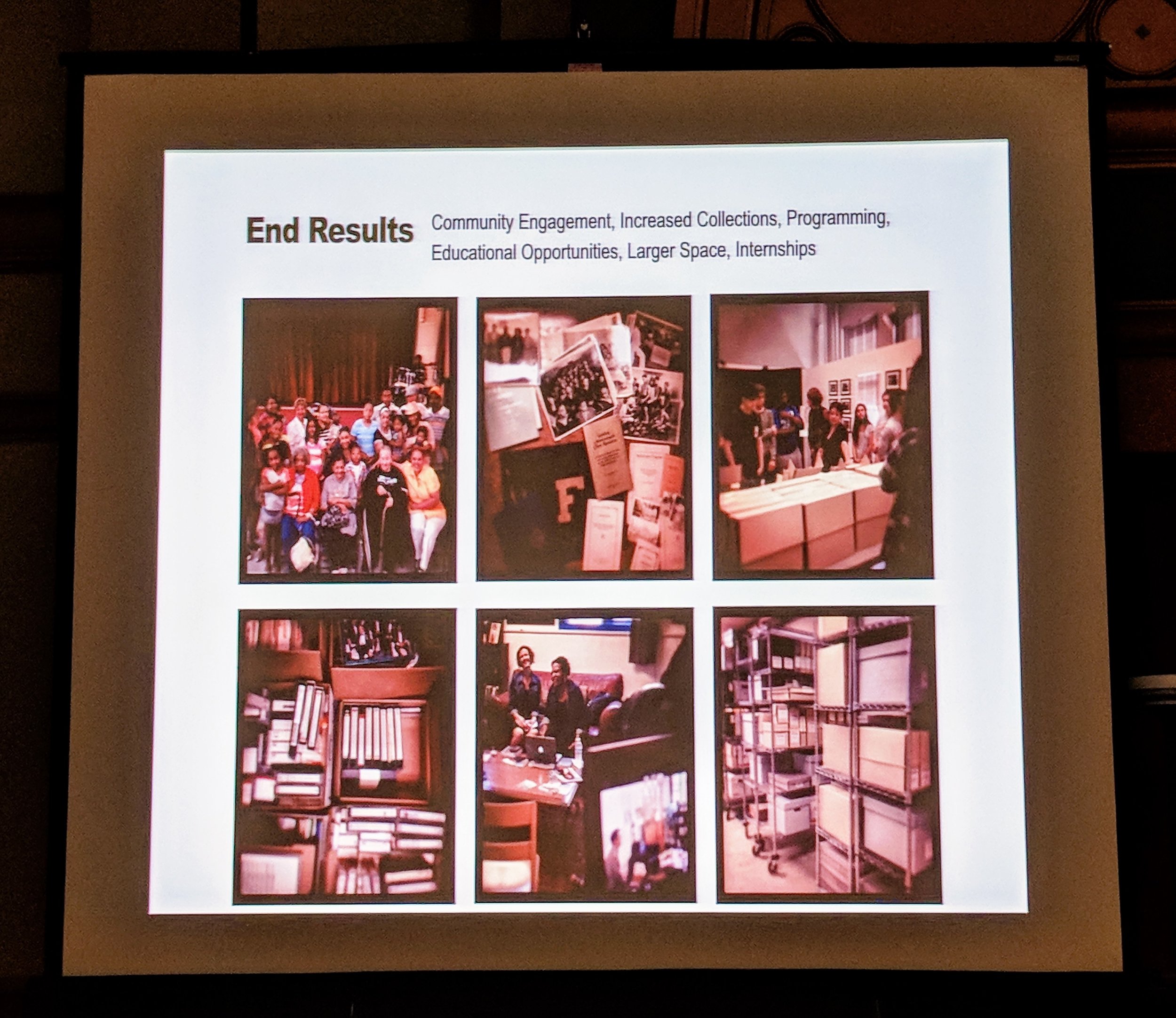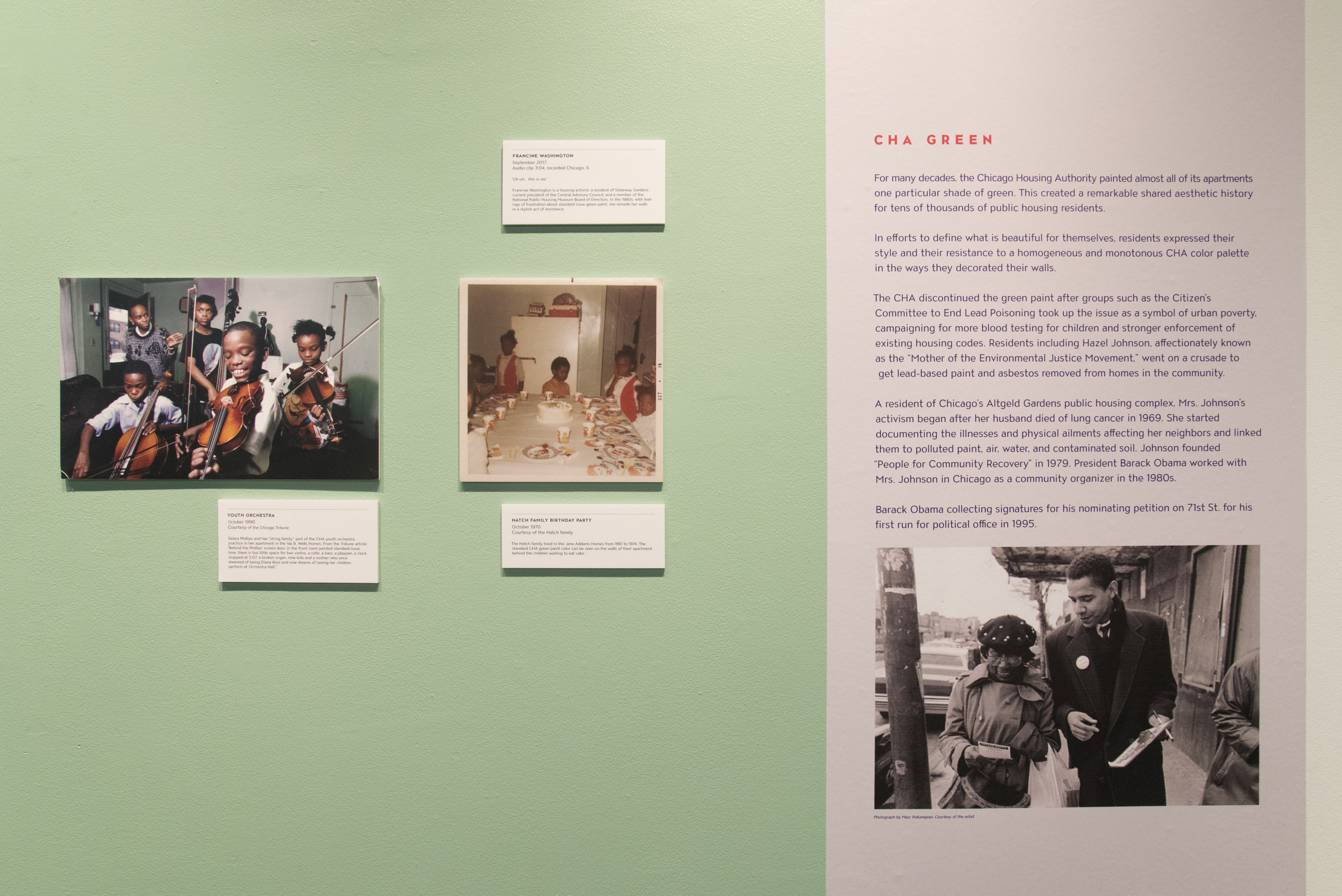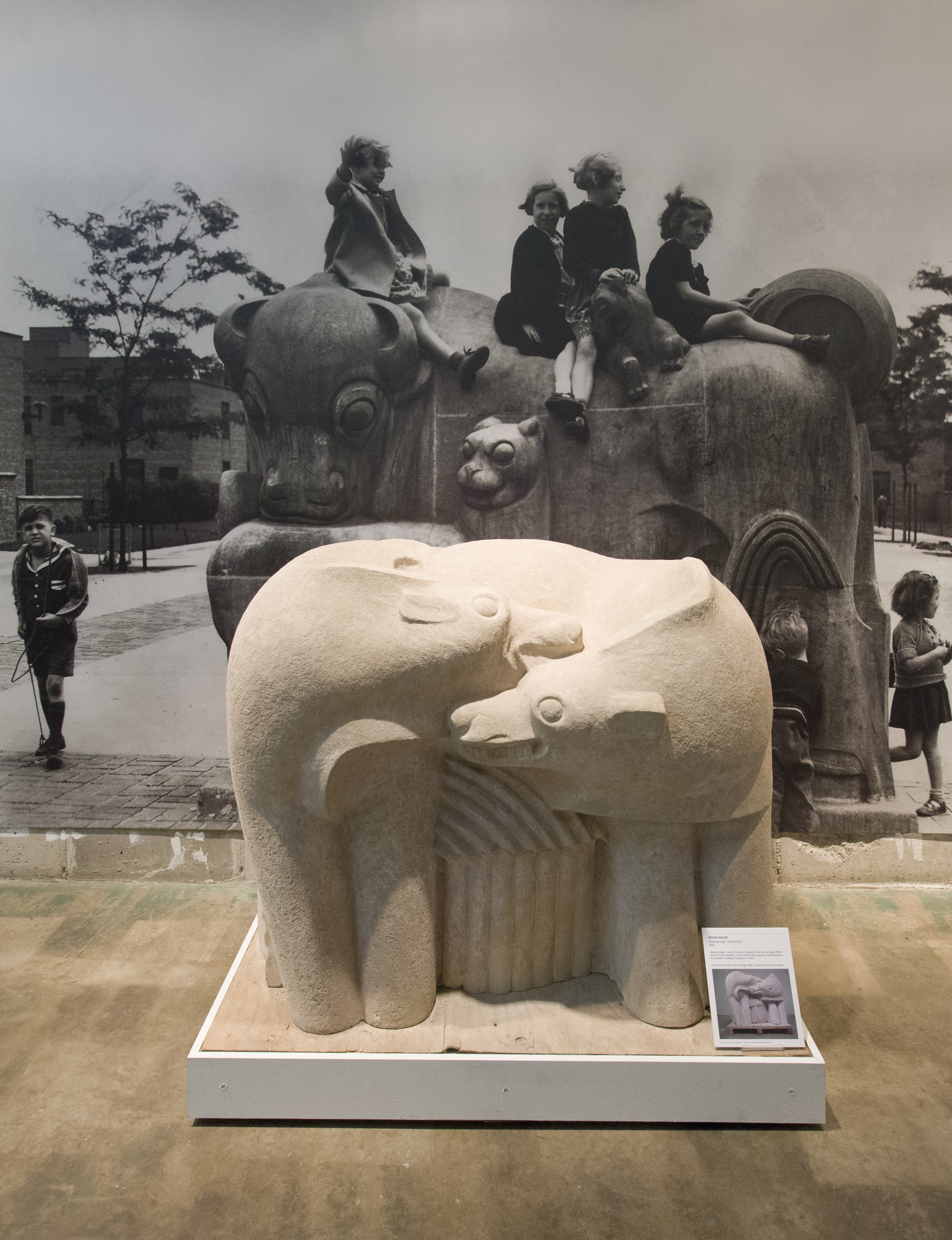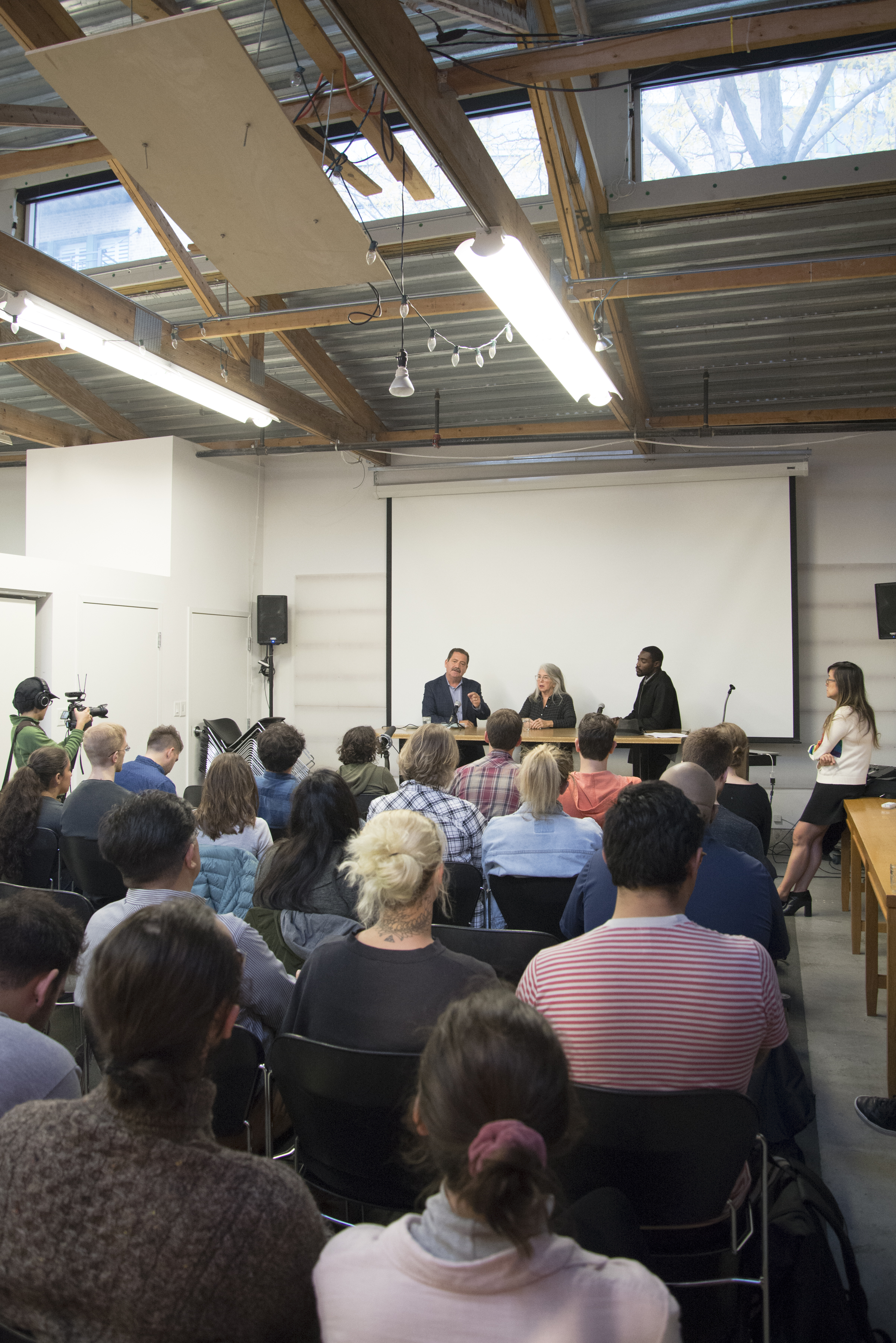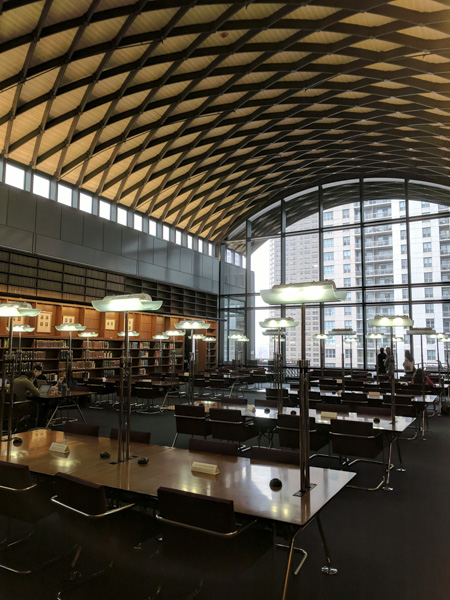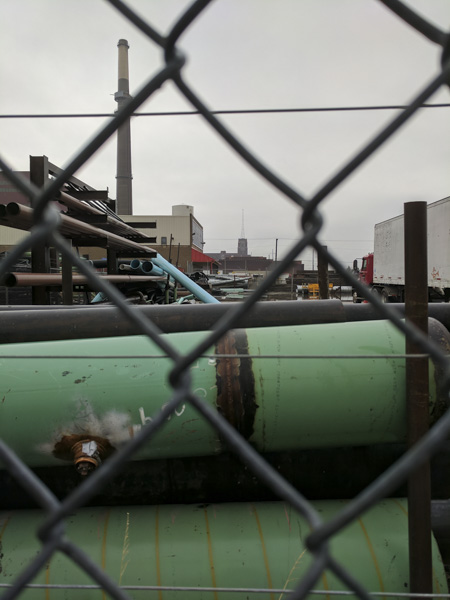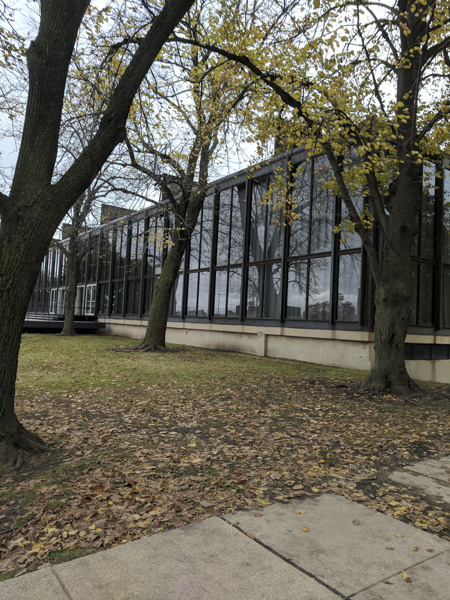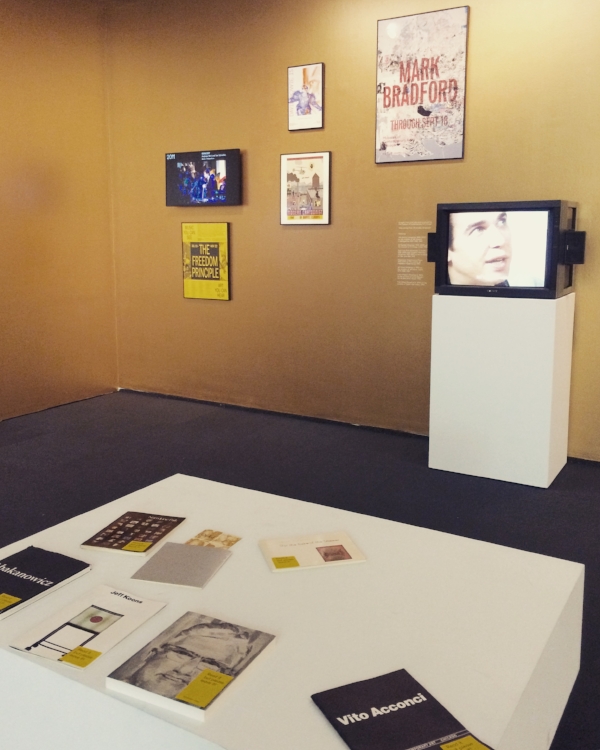This was my first year attending the Midwest Archives Conference, and luckily, it was located here in Chicago. I knew it would be a smaller event than the American Institute for Conservation conference that I attended last spring, and I was pleasantly surprised by the content presented. In particular, there was a cohesiveness in the tours and sessions I attended on the first day, all of which related to diversity in archival practice. The day started off with a tour of two southside archival repositories: the Carter G. Woodson Regional branch of the Chicago Public Library (CPL) and the DuSable Museum of African American History, and it ended with conference sessions.
At Woodson, we toured the newly reopened facility and learned more about the history of this regional branch. This included a discussion of and glimpse at some of the materials in the Vivian G. Harsh Research Collection of Afro-American History and Literature. This collection is one of the largest and most comprehensive documenting black life in Chicago and the region as a whole (Chicago Public Library 2018). Part of the history of these materials is the strong support of the surrounding southside community itself: neighbors banned together to raise funds in order to build an expansion of the library to house the collection, and they fought against the relocation of the materials to the hub CPL location downtown Chicago. The Vivan G. Harsh society formed as a non-profit friends organization in 1994 to directly support the archival materials at Woodson (Vivian G. Harsh Society 2018). Our librarian guide recounted the variety of content in the collection, from newspaper clippings to funeral programs to yearbooks. She also spoke to the wide range of users of this material, including genealogists and students working on history fair projects. I enjoyed the chance both the take in the space, especially the beautiful art and revamped exhibit featuring the archival collections, and appreciated the opportunity to see the closed stacks and learn about this amazing collection from staff.
Exhibit space at Woodson regional branch, featuring several archival collections stored onsite.
A few of the many yearbooks stored in the closed stacks.
Our second stop was the DuSable Museum of African American History, which I visited several years ago in order to write a paper for one of my Museum Studies classes at Northwestern. Our visit started in the amazing entrance hall covered in Thomas Miller mosaics, where the museum’s archivist, Ms. Skyla Hearn, told us the story of the institution. The museum exists today because of the efforts of Dr. Margaret Taylor Burroughs. She was passionate about African American culture and history and worked tirelessly to create a place where the community’s story could be told. She and her second husband Charles developed the idea for a museum, and with the support of a large network, they transformed their plan into reality. The museum has grown substantially since it first opened its doors to the public in 1961, and it was through Dr. Burroughs’ strategic collecting and deep connections with the local community that has led the institution to its current position as an invaluable and beloved museum dedicated to telling important, often untold or overlooked stories (Feldman 1981).
Ms. Hearn then led us on a tour of their exhibition spaces, and we ended up spending the most time in the more recently developed exhibit Freedom, Resistance, and the Journey Toward Equality. There were a number of impactful archival pieces featured, including ephemera from America’s slave trade through posters and film footage from the civil rights movement. The exhibition is “dedicated to the thousands of unsung lives given in the name of freedom and equality,” and it tells important stories in a limited amount of space (DuSable Museum 2018). The archivist then spoke about upcoming exhibits and the joy of finding new content while organizing and cataloging the museum’s archival collections. We ended our tour in the newly completed reading room for the Hamilton Institute for Research and Civic Involvement. The museum has been working closely with Dr. Charles V. Hamilton, scholar, activist, and political scientist, on the creation of this addition to the museum (Hutcherson 2018). Dr. Hamilton’s papers (an ongoing acquisition), in addition to a wide range of additional archival and rare book collections can be viewed in the new reading room. It was exciting to hear about the substantial progress that has been made acquiring, cataloging, and making accessible collections relating to African American history. These are amazing resources, and they are in good hands.
Some of the collections on display in the exhibit Freedom, Resistance, and the Journey Toward Equality
The conference officially kicked off with the plenary session, which featured Natalie Moore, WBEZ Chicago Public Radio investigative reporter and author of The South Side: A Portrait of Chicago and American Segregation. Much of her work looks at entrenched segregation in Chicago, and her book is a deep-dive into the impacts of segregation on the housing market. While much of the content focuses on more contemporary events, looking at her and her family’s experience with property ownership, she does provide historical context for their story. Local archival repositories (Chicago History Museum, Newberry Library, Chicago Public Library, etc) were important resources for her in covering the histories of the Great Migration, Jim Crow, redlining, public housing, and white flight. Primary source materials helped her to gather data about the realities of inequity in neighborhoods and housing. She related how even materials like yearbooks could provide valuable insights: patterns of shifting neighborhood demographics could be traced in photographs of the student body over the course of a few years. It is exciting to see the ways in which archival materials can be used and interpreted, especially linking the past with current realities. I am grateful that there are individuals like Ms. Moore who are making the connections between past and present issues, and telling stories which will hopefully make the city and region as a whole more aware of the ongoing inequity in Chicago and beyond.
Finally, the general sessions at the conference began in earnest. I attended a panel program entitled “Beyond Institutional Boundaries: Community Archives and Representational Belonging,” in which five speakers addressed various institutions and programs that are embracing local communities. Each project reflected the notion of “representational belonging,” which is key to deferring the erasing of communities and instead provides them the agency to collect and tell their own stories (Caswell 2016). Presenters discussed Mukurtu Collections Management System and ArtHyve, in addition to the Chicago Area Archivists (CAA) Day of service at Pullman State Historic Site, the American Library Association’s (ALA) Preservation Outreach project at Stony Island Arts Bank, and the history of Shorefront Legacy Center.
The Pullman project was an interesting case study in the merger of historic sites with archival content and the surrounding community. The representative from CAA proposed that regional archival organizations can fulfill a unique role in how they serve their surrounding communities, as they are comprised of individuals not institutions. As such, some of the power struggles and challenges with agency and ownership may not arise. In this instance, CAA worked with the neighborhood to define common goals for the project and emphasized relationship building throughout the process. The end result was the cataloging of over 180 boxes of archival material relating to the historic site, which included box level inventories and condition assessments. Archivists from CAA assisted in organizing the event, and providing expertise, but it was the community of local volunteers in this southside neighborhood which owned and directed the work.
Slide from the CAA and Pullman collaboration
The ALA preservation outreach project also helped make common ground between conservation practitioners and another southside Chicago neighborhood via a local cultural center. The Stony Island Arts Bank is a “hybrid gallery, media archive, library and community center – and a home for Rebuild’s archives and collections,” Rebuild being the parent organization (Stony Islands Art Bank 2018). This site was chosen because its location in an area historically underrepresented and under-resourced in terms of archival care and management, and the ALA series is focused on engaging in partnership with these types of organizations. The day-long event started with presentations from ALA members on preservation best practices in regards to a wide range of archival material reflected in the collection, from books to photographs, sheet music, posters, and ephemera. The rest of the day was spent working with Arts Bank staff and community volunteers to rehouse portions of the collection. Access to these materials is a crucial aspect of the mission for the organization, so the goal of this partnership was addressing collections care to help ensure their longevity. The Dorchester Avenue photograph collection was one focal point for the effort. These found images from the neighborhood show snippets everyday black life in Chicago from the 1950s to the 1980s. Their rehousing in binders will allow easier access and will help to keep them organized and protected. The Ed Williams collection was also addressed, and it is through an ALA press release about these materials in particular that led to a newspaper article on the preservation outreach project. This write-up resulted in increased community donations and engagement with the cultural center. The event not only provided the Arts Bank with rehoused archival material, it also provided foundational preservation knowledge to attendees, and it helped further connect the organization with its neighborhood.
The Shorefront Legacy Center’s history is a demonstration of true community archiving in practice. The organization originated with the goal of showing the experiences of black life in the suburbs around Chicago, not just in the urban environment (Shorefront Legacy Center 2018). This community-created organization was developed in order to address a lack of representation in traditional archival spaces, and to reverse narratives of powerlessness that sometimes follow with black history and representation. The center instead focuses on empowerment and agency through collaboration with the community it represents. This is done in part through a partnership with the Black Metropolis Research Consortium. The relationship supports the center’s work through education on best practices and guidelines, as well as increased visibility and the subsequent increase in resources. One recent project the center has undertaken has been an outreach project with one of the Evanston YMCA branches. Community relations with this location were poor due to the lasting legacy of segregation: local African Americans were barred from joining or using this facility in the mid-twentieth century. Archival material in the form of meeting minutes were used to facilitate open forum discussions and the recording of oral histories. This helped the community to more openly discuss and collectively process its history, and it led to an exhibition at the Shorefront Legacy Center, as well as documentary books and films. At the same time, this project helped with YMCA to act to bridge the gap by acknowledging their history (renaming rooms) and welcoming the entire community (creating scholarships). The center strives to collect, provide access to, and foster development of products (exhibitions, art, documentaries) in order to reach more individuals and tell more stories. This nimble organization has accomplished a great deal, and embodies community-led archiving, in spite of limited resources.
Slide from the Shorefront Legacy Center presentation
I learned so much in one day, and the theme of diversity and representational belonging resonated with me. I have worked in traditional museum and library spaces, which have not always focused on or done an adequate job of collecting material from diverse communities or successfully partnering with them. I hope that this will change as time goes on, and institutions realize how valuable these relationships are. Additionally, I hope traditional repositories can take cues from community-organized repositories to learn what equitable collaborations look like. I also hope to be involved in or support in some way community archiving efforts at the National Public Housing Museum. This community has historically been incredibly effective at organizing and advocating, and I am sure that this grassroots-founded museum will do wonderful things.
References
Caswell, M., Cifor, M. & Ramirez, M. (2016) “To Suddenly Discover Yourself Existing”: Uncovering the Impact of Community Archives. The American Archivist: Spring/Summer 2016, 79(1), 56-81.https://doi.org/10.17723/0360-9081.79.1.56
Chicago Public Library: Woodson Regional. (2018). Retrieved April 3, 2018 from https://www.chipublib.org/about-woodson-regional-library/
The DuSable Museum: Freedom, resistance, and the journey toward equality. (2018). Retrieved April 3, 2018 from http://www.dusablemuseum.org/exhibits/freedom-resistance-and-the-journey-toward-equality/
Feldman, E. & DuSable Museum of African American History. (1981). The birth and the building of the DuSable Museum. Chicago: DuSable Museum Press.
Hutcherson, L. (2018, January 27). Noted Political Scientist Dr. Charles V. Hamilton Establishes Research Institute at DuSable Museum in Chicago. Good Black News. Retrieved from https://goodblacknews.org/2018/01/27/noted-political-scientist-dr-charles-v-hamilton-establishes-research-institute-at-dusable-museum-in-chicago/
Shorefront Legacy Center. (2018). Retrieved April 3, 2018 from http://www.shorefrontlegacy.org/
Stony Island Arts Bank. (2018). Retrieved April 3, 2018 from https://rebuild-foundation.org/site/stony-island-arts-bank/
Vivian G. Harsh Society. (2017). Retrieved April 3, 2018 from http://harshsociety.org/


